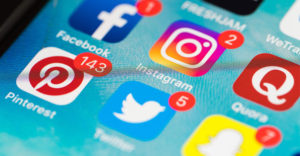
The moment may have passed way under your media radar, seeing as how it happened on a Sunday night in late August, when TV viewers were just coming down from a Beijing Olympics high. On CNN, anchor Rick Sanchez was previewing the Democratic National Convention about to get under way in Denver, grilling senior political analyst Bill Schneider about the latest poll numbers showing John McCain and Barack Obama in a tight race, when Sanchez turned to his audience for a question.
No, CNN isn’t resuscitating “Talk Back Live.” Sanchez actually turned to his computer and showed off Facebook and Twitter pages that the network had set up on his behalf — pages that are endlessly promoted, as only CNN can do these days. But in this one instance, the hype and hawking may have paid off: A viewer used one of the pages to post a valid complaint about polling methods that rely on traditional phone surveys via landline. Most of Obama’s young supporters use cell phones. Sanchez passed the comment along to Schneider, who said he and the network’s polling data partners were aware and factored this into their findings. (He didn’t, however, explain exactly how that was accomplished.)
Nevertheless, it was all brought to you by a cable network dipping its feet into the Web 2.0 waters, and social networks that enable everyone to be a broadcaster of sorts. But was it a true Moment of Illumination and Viewer/Voter Participation, or simply one level up from a late night radio call-in show? With history about to be made in Denver, are the all-news networks making historic use of the new social media tools at their disposal?
Cable News Status Update
It’s obvious that the primary Internet investments for Fox News, CNN and MSNBC are their Web sites, and it’s money well spent judging from monthly rankings, page views and online ad presence. But political convention coverage is a unique opportunity to show off the beginnings of social network strategies; with politics now front and center on the national stage, you reach a younger audience that could be pivotal at the polls in November. Here’s the opportunity to find out what they’re thinking about Iraq, healthcare, education.
Right now the cable news Facebook pages are providing that chance, but they’re also big on extending their respective brands onto a media platform used by a demographic prized by advertisers. The pages for CNN and Fox News, in particular, have become cyberspace versions of the brewpubs and grills that CNN and Fox have opened for DNC week at the Pepsi Center in Denver; the two pages are certainly wearing more flair than a Bennigan’s waitress, all in the form of convention video highlights, stories, links to blog posts by anchors, reporters and political analysts, behind-the-scenes photos and backstage video tours of the Pepsi Center. And then there are the comments, ranging in quality as all Web comments do, from thoughtful observations about the aforementioned issues rivaling the paid pundits to trolls who would be right at home in a cave in Mordor.
It’s a little surprising that the MSNBC Facebook page comes up a little short, in my view. MSNBC.com has great content, but you wouldn’t know it from its social network page; more flair, people. To be fair, there are links to NewsWare, MSNBC.com’s cool news applications.
The Hipness Factor
Apart from CNN’s award-winning YouTube debate earlier in the primaries, Ian Bogost, associate professor with Georgia Tech’s School of Literature, Communication and Culture, thinks the cable networks’ use of social media is more for show than tell. “One of the questions is why do they do it,” Bogost told me. “Do they do it because they believe Twitter or Facebook or blogs create more discourse and citizen engagement, or do they do it because being in that world draws attention to the news media as being hip or technologically timely? I have the sort of cynical suspicion that they do it for the latter reason, more to appear current than it is for some strong romantic or moral belief that citizen contribution has an impact on a sense of self-government.”
There’s nothing truly groundbreaking here. The use of social networks to solicit questions and comments on TV news is part of a long line of viewer feedback that started with a newspaper’s Letters to the Editor section and graduated to talk radio call-ins, TV stations seeking “man on the street” interviews (a rite of passage for every entry-level reporter in a small-to-medium TV market) right up to Larry King reading e-mails and taking phone calls. At least with Facebook and Twitter, producers don’t have to worry about getting pranked live a la Howard Stern.
“There’s nothing wrong with old uses modified for the new channels of communications,” Bogost said. “But it is somewhat suspicious to say, ‘Oh look how progressive the new technology is.’ It’s an incremental improvement, not some kind of magic silver bullet. It does show that news organizations are really paying attention to this stuff. The lesson learned from the early ’90s, when the Web was new, was that the news industry totally missed out. It signals a shift to me that news organizations have recognized they’re going to think more about this stuff. They’ve recognized that they have to think more about technology in their strategic planning.”
Yet if the cablers had to answer the Facebook Status Update question, “What are you doing right now,” the answer might come back: “Getting online but asking for directions. Check back next week in St. Paul.”
Renay San Miguel is a former TV anchor and reporter who has spent 28 years in journalism, including stops at TV stations in San Angelo, Austin, San Francisco and Dallas and cable networks CNBC and CNN/CNN Headline News.


















































